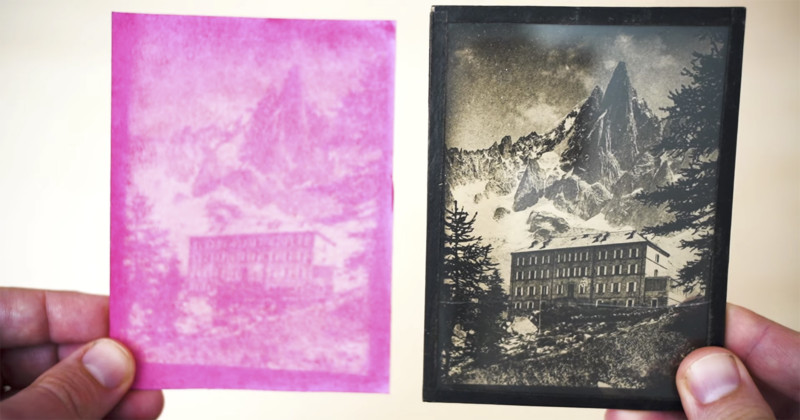Photographer and YouTuber Mathieu Stern has been getting into at-home photo printing lately. But after experimenting with cyanotypes, he decided to simplify even further by trying to print photos using beetroot juice, and nothing else. Dwight Schrute would be proud.
What Stern is creating here is called an “Anthotype,” a process invented in 1842 by Sir John Herschel.
“An anthotype is an image created using photosensitive material from plants,” explains Stern in the video’s description. “An emulsion is made from crushed flower petals or any other light-sensitive plant, fruit or vegetable.”
That emulsion is then used to coat the paper, and some kind of material—such as leaves or a transparent photo positive—is placed on the paper and exposed to the sun for several days (in this case 7) until everything not covered by the photo positive is “bleached.” The result looks something like this:

It’s important to note that there is no “fixer” involved in this process, so the photo print remains sensitive to sunlight. But the results are kind of cool, and the idea makes for a fun (and cheap) weekend experiment in printmaking.
Check out the full video above for a step-by-step breakdown of the process. And if you want to dive into other cheap at-home printmaking methods, check out Mathieu’s recent video on the cyanotype process. He published a step-by-step guide for that process two weeks ago.